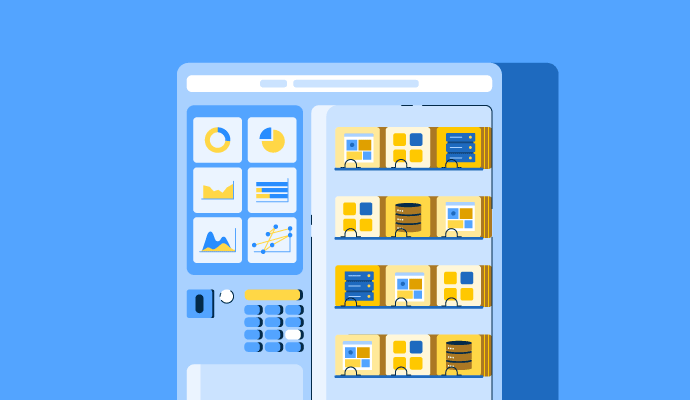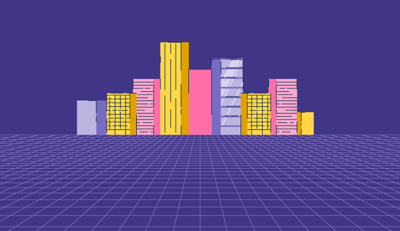June 5, 2023
 by Sagar Joshi / June 5, 2023
by Sagar Joshi / June 5, 2023

Modern technologies shape the era we live in. Among these paradigm-shifting technologies, virtualization stands out as it continues to transform our relationship with hardware, software, and data.
You can feel its presence across industries, from the sprawling data centers of Silicon Valley to any small business server room. It’s not just changing how businesses use technology – virtualization is revolutionizing it. Many companies have started turning to data virtualization software to facilitate agile data storage, retrieval, and integration processes through virtual data layers.
Let’s look through the illuminating lens of statistics to discover exciting trends propelling virtualization into the future.
Virtualization creates a virtual version of something: a server, a desktop, a storage device, an operating system, or even a network. It empowers users to run multiple virtual machines on a single piece of hardware, each operating independently and with its own dedicated resources. It allows businesses to scale quickly while increasing resource utilization and reducing costs.
Let’s dive into some exciting trends of virtualization.
Did you know? An x86 server is a system that uses an x86 central processing unit (CPU) architecture. Intel developed x86, a family of complex instruction set computer (CISC) instruction architecture.
Server virtualization is the process of partitioning a single physical server into multiple unique and isolated virtual servers, each capable of running its operating system and applications. Businesses use it to maximize their hardware usage, dramatically improving system scalability and significantly decreasing costs.
Let’s see what else is in store with these server virtualization statistics.
Gone are the days when each application needed its own dedicated server, leading to underutilized resources and towering expenses. With server virtualization software, you can make the most out of the hardware, condensing physical infrastructure without compromising performance or reliability.
Virtualization software is a suite of applications designed to create virtual, rather than physical, versions of devices and resources. These could range from servers and networks to storage devices and operating systems. It abstracts and isolates the software from the underlying hardware, enabling multiple virtual machines to run simultaneously on a single physical machine with its resources.
is the projected revenue driven by the virtualization software market in 2026.
Source: Statista
Virtualization software produces a more robust and resilient IT infrastructure, facilitating more accessible backup, recovery, and migration processes.
With data virtualization, applications can retrieve and manipulate data without needing to know its technical details, such as how it's formatted or where it's physically located. This method creates a single virtual layer aggregating data from various sources, making it readily accessible and actionable.
Whether you're a seasoned data scientist, an IT professional, or a business leader eager to boost data-driven growth, let these statistics shed light on the potential of data virtualization.
is the expected market size of the global data virtualization market by 2028.
Source: Business Wire
With data virtualization, companies can unlock real-time insights, improve their decision-making process, and bolster their agility without investing in costly physical data consolidation or wrangling with data silos.
Application virtualization encapsulates an application from the underlying operating system on which it's executed. This encapsulation allows the application to run in a self-contained, virtual environment, eliminating installation processes, minimizing application conflicts, and enhancing software portability.
Below are some statistics to see what’s trending in application virtualization.
Businesses can use application virtualization to simplify their application management, improve system compatibility, and enhance user experience across diverse platforms. It also contributes to the scalability of operations, allowing businesses to adapt to changing needs quickly.
Desktop virtualization involves creating virtual versions of a computer's desktop environment that are hosted on a central server rather than the physical machine. It allows users to access their desktops anywhere, on any device, offering unprecedented flexibility and mobility.
Discover the latest movement in desktop virtualization with these stats.
is the estimated market size of the desktop virtualization market in 2027.
Source: MarketsandMarkets
Desktop virtualization is an essential tool for organizations seeking to modernize their IT infrastructure and adapt to the demands of a dynamic workforce.
Virtualization is not just a fleeting trend, but a powerful force driving digital transformation across industries. These statistics and trends reveal a growing momentum in its adoption, underlining its role in developing modern IT infrastructures.
From server consolidation to desktop flexibility, from data unification to application portability, virtualization continues to redefine interaction with digital resources. This technology will shape new paradigms in efficiency, scalability, and cost-effectiveness.
Whether you're an IT professional, a business leader, or a tech enthusiast, keeping pace with these trends will be essential in navigating the digital seascape. After all, virtualization’s evolution mirrors the technological advancement trajectory. Let’s unveil the future where digital agility and flexibility are desirable and indispensable.
Learn more about data virtualization and understand why businesses need it.
Sagar Joshi is a former content marketing specialist at G2 in India. He is an engineer with a keen interest in data analytics and cybersecurity. He writes about topics related to them. You can find him reading books, learning a new language, or playing pool in his free time.
Nowadays, it’s rare for an organization to not provide a way for people within it to access...
 by Mary Clare Novak
by Mary Clare Novak
Virtual events are digital gatherings where people connect through the internet. Users can...
 by Sagar Joshi
by Sagar Joshi
Metaverse means "beyond the universe” and was introduced to us by authors like Neal Stephenson...
 by Sagar Joshi
by Sagar Joshi
Nowadays, it’s rare for an organization to not provide a way for people within it to access...
 by Mary Clare Novak
by Mary Clare Novak
Virtual events are digital gatherings where people connect through the internet. Users can...
 by Sagar Joshi
by Sagar Joshi


